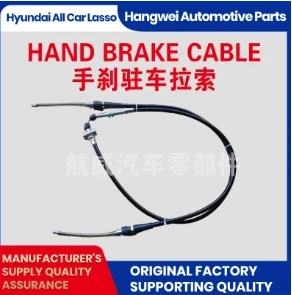Understanding Gear Cables for Optimal Bicycle Performance and Maintenance
The Essential Guide to Gear Cables Understanding Their Role in Bicycle Performance
When it comes to bicycle performance, every component plays a crucial role, and gear cables are no exception. These seemingly simple elements are the unsung heroes behind smooth shifting and overall efficiency in bike performance. In this article, we will explore the importance of gear cables, their anatomy, common issues, and maintenance tips to ensure your bike stays in peak condition.
The Anatomy of Gear Cables
At first glance, gear cables may appear straightforward, but they are a complex part of a bike's transmission system. A typical gear cable setup consists of an inner cable and an outer casing. The inner cable is a flexible wire that transmits the pulling force when the rider shifts gears. The outer casing, usually made from a durable material, protects the inner cable from the external environment and minimizes friction during operation.
The cable operates in conjunction with derailleurs, which are mechanisms that move the chain between different gears. When a rider rotates the gear shifter, a change in tension occurs in the cable, allowing the derailleur to move and adjust the chain's position on the cassette or chainrings.
Common Issues with Gear Cables
Despite their importance, gear cables can face a variety of issues that can affect performance. One of the most common problems is fraying. Over time, the inner cable can become worn, resulting in frayed ends. This not only hampers shifting but can also pose a safety risk if the cable snaps while riding.
Another issue is excessive corrosion, which typically affects the outer casing, especially if the bike is subjected to wet conditions or stored in a damp environment. Corroded cables can lead to increased friction and sluggish gear shifts, making rides less enjoyable.
Finally, improper installation or adjustment can lead to poor shifting performance. It's crucial to ensure that the cables are correctly tensioned and aligned when installing or servicing the bike.
gear cables

Maintenance Tips for Gear Cables
Maintaining gear cables is essential for ensuring optimal performance and longevity. Here are some practical tips to keep your cables in top shape
1. Regular Inspection Check your gear cables frequently for any signs of wear, fraying, or corrosion. Look out for rust spots and ensure that the cable is moving freely within the casing.
2. Clean and Lubricate Periodically clean the cables to remove grime and dirt buildup. A light application of bike-specific lubricant can help reduce friction and prolong cable life. However, be cautious not to over-lubricate as it can attract dirt.
3. Adjust Tension If you notice that shifting has become sluggish or is misfiring, it may be time to adjust the cable tension. Most shifters have a simple tension adjustment mechanism, which can restore smoothness in shifting.
4. Professional Help If you're unsure about the condition of your gear cables, it could be beneficial to take your bike to a professional mechanic. They can provide a thorough inspection and ensure that everything is functioning optimally.
Conclusion
In conclusion, gear cables are vital components that significantly impact your bike's shifting performance. Understanding their anatomy, recognizing common issues, and implementing maintenance practices can enhance your riding experience and prolong the life of your bicycle. Whether you're a casual rider or a competitive cyclist, prioritizing gear cable care can lead to a smoother, more efficient ride. So, don’t overlook these essential cables—your bike will thank you for it!
-
Workings of Clutch Pipe and Hose SystemsNewsJun.04,2025
-
The Inner Workings of Hand Brake Cable SystemsNewsJun.04,2025
-
The Secrets of Throttle and Accelerator CablesNewsJun.04,2025
-
The Hidden Lifeline of Your Transmission Gear Shift CablesNewsJun.04,2025
-
Demystifying Gear Cables and Shift LinkagesNewsJun.04,2025
-
Decoding Clutch Line Systems A Comprehensive GuideNewsJun.04,2025
